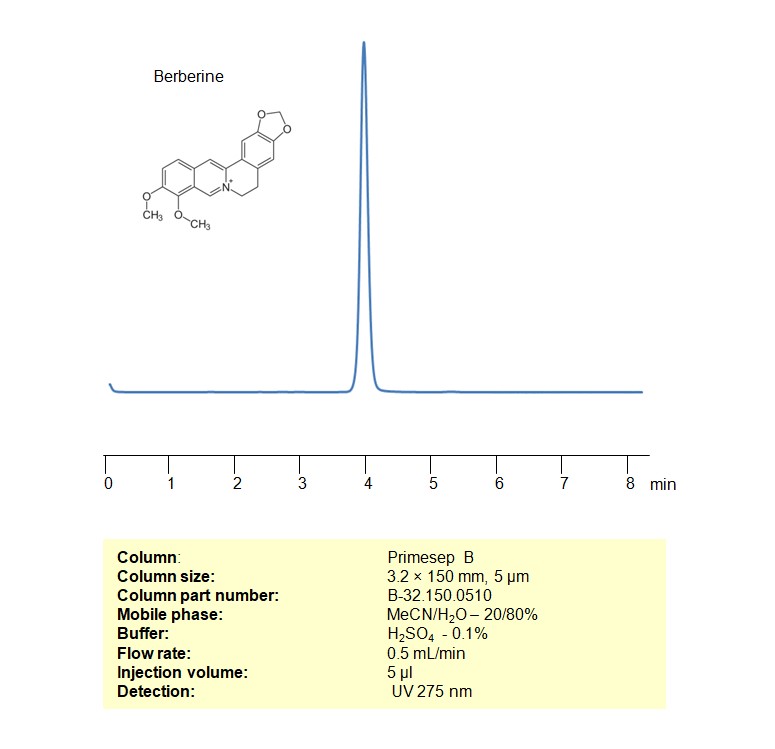Alltesta HPLC Method for Berberine on Primesep B by SIELC Technologies

High Performance Liquid Chromatography (HPLC) Method for Analysis of Berberine
Berberine is a naturally occurring alkaloid found in several plants, including the roots, rhizomes, and stem bark of plants such as Berberis species (barberry), Coptis chinensis (goldthread), and Hydrastis canadensis (goldenseal).
Biological Activities:
- Medicinal Properties: Berberine has been used in traditional medicine for its various medicinal properties, including antimicrobial, anti-inflammatory, and antioxidant effects.
- Blood Sugar Regulation: Some studies suggest that berberine may help regulate blood sugar levels and improve insulin sensitivity, making it of interest in diabetes research.
- Cholesterol Management: It has been investigated for potential benefits in managing cholesterol levels.
- Anticancer Properties: Berberine has also shown promise in preclinical studies for its potential anticancer properties.
Uses:
- Berberine supplements are available and marketed for various health purposes.
- In traditional medicine, berberine-containing plants have been used for treating various conditions.
Berberine can be retained, and analyzed using a Primesep B mixed-mode stationary phase column. The analysis utilizes an isocratic method with a simple mobile phase consisting of water, acetonitrile (MeCN), and sulfuric acid as a buffer. Detection is achieved using UV at 275 nm
| Column | Primesep B, 3.2 x 150 mm, 5 µm, 100 A, dual ended |
| Mobile Phase | MeCN/H2O – 20/80% |
| Buffer | H3PO4 -0.1% |
| Flow Rate | 0.5 ml/min |
| Detection | UV 275 nm |
| Class of Compounds | Corticosteroids |
| Analyzing Compounds | Berberine |
Application Column
Primesep B
Column Diameter: 3.2 mm
Column Length: 150 mm
Particle Size: 5 µm
Pore Size: 100 A
Column options: dual ended





